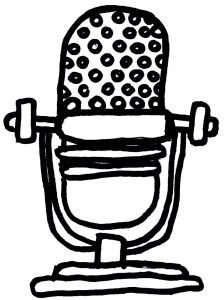

Usually when an older film resurfaces in digital restoration, it means brighter colors, shaper lines, a renewed vibrancy. Such joys are sparse, if at all existent, in the new digital scan of the 1966 French New Wave political screed La Religieuse (The Nun). That’s not to say the restoration itself is lacking in any technical achievement or attention to detail; The Nun is given a new, bellowing potency in its restored form – both in the refreshed patina of its imagery and in the thunderous effect of its sound design. The lack of vibrant color and lush imagery in the restoration is more a result of the material it’s servicing. This is a grim prison sentence of a motion picture, a harsh reminder of the punishment that awaits anyone born a woman under the “wrong” circumstances. Although it’s never as overtly, sexually blasphemous as later arthouse nunsploitation pieces like the Ken Russell classic The Devils or the recent sex comedy The Little Hours, it’s not difficult to see why the Catholic Church pushed to have The Nun banned upon its initial release. Any brief flashes of joy, light, color, or relief detectable in the film are quickly stamped out by exploitation, guilt, and misogyny, all in the name of serving God and the Church. I watched the new restoration of The Nun in a crowded theater at this year’s New Orleans French Film Fest, but it felt as if I were locked in solitary confinement for all 140 grueling minutes of it, which may as well have lasted 140 years.
Director Jacques Rivette is generally understood to be one of the more cerebral, surreal artists of The French New Wave, but that reputation doesn’t come into play too frequently in this instance. His most experimental, challenging impulses surface in The Nun as a dissociative approach to sound design. Story-wise, Rivette remains relatively faithful to Denis Diderot’s 18th Century novel of the same name. Roaring winds, deafening church bells, disorienting thwaps of arrhythmic jazz: the soundtrack of The Nun is pure auditory madness. It places the audience in the overwhelmed, dissociative mind of its protagonist in the exact same way modern auteurs like Josephine Decker still establish first-person POV in the 2010s. As the titular nun is starved, isolated, forced to kneel in repentance for vaguely-defined “sins,” and sold by her parents into a life of perpetual boredom, the audience is miserably in sync with her. Sometimes, a harsh edit will mimic her disoriented sense of time as she loses track of the clock & calendar while also losing sense of her autonomy & self. Mostly, we’re left to rot within the grim, grey walls of her cell as a Kafkaesque battle for her freedom unfolds in locked rooms far offscreen, away from her control and our observation. As overwhelming & figurative as the sound design can be, Rivette holds back substantially in the potential mental escapes offered by verbal or narrative experimentation. It’s an artistic restraint that emphasizes the constraint in freedom suffered by its protagonist – locking us all away to die alone in misery right along with her.
French cinema legend Ana Karina stars as the titular, tragic nun. Her story is meant to be reflective of many unmarried, unwanted young women of her era: locked away in a convent for her family’s convenience. Born out of wedlock to parents with at best moderate wealth, she’s treated as a burden that weighs her family down; she can’t make a life on her own without a husband, and the circumstances of her birth render her unmarriable in “decent” society. Her trips to the altar to take vows as God’s bride, under protest, read as funeral marches. She pleas to her parents not to sacrifice her to God from behind prison bars, causing great public scandal. Her birth mother coldly requests, “Do not poison my life any further” and gradually breaks down her resistance to taking vows as a nun, an act she cannot remember once it is done. From her birth mother’s cold indifference to her mothers superior’s varying modes of tyranny, she’s never allowed an inner life or independence. Across two convents and countless authority figures’ rule, she’s tortured, coddled, groomed for rape, consoled, pitied, shamed, and silenced – all while prisoner to a religious cause she was forced to assume under duress. And everyone around her has a nerve to contextualize her path as God’s sacred plan.
For all the shame, confinement, physical abuse, and sexual grooming that awaits Ana Karina’s reluctant nun, the greatest tragedy of the film is the way The Church extinguishes her inner life before it gets to fully develop. She’s allowed no feeling, no emotion, no dreams, no desire. When asked how she’s getting along in the convents, she replies only “I obey my fate” and “Time passes.” There’s a soul-crushing emptiness to her perpetual boredom that weighs heavily on the tone of the picture. Any brief promises of relief from a seemingly kind priest, lawyer, or mother superior who might break her free from her vows or allow her to explore her own inner life are quickly stamped out as those authority figures reveal their true selfish, lustful desires for her – purposes that offer no personal ambition or autonomy. In The Nun, being born a woman under the “wrong” circumstances is a life-long prison sentence – a mandatory sacrifice of self to others’ piety, lust, and vanity. It may not be an especially pleasant sit and it’s understandable why The Church might bristle at its political implications, but it’s a true account of a very gendered, widespread form of human misery experienced by countless women across history – one the film replicates almost too vividly.
-Brandon Ledet




